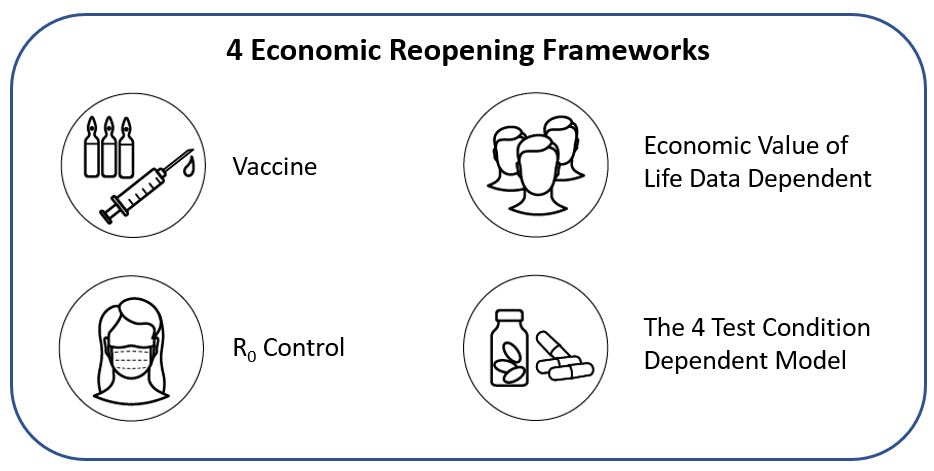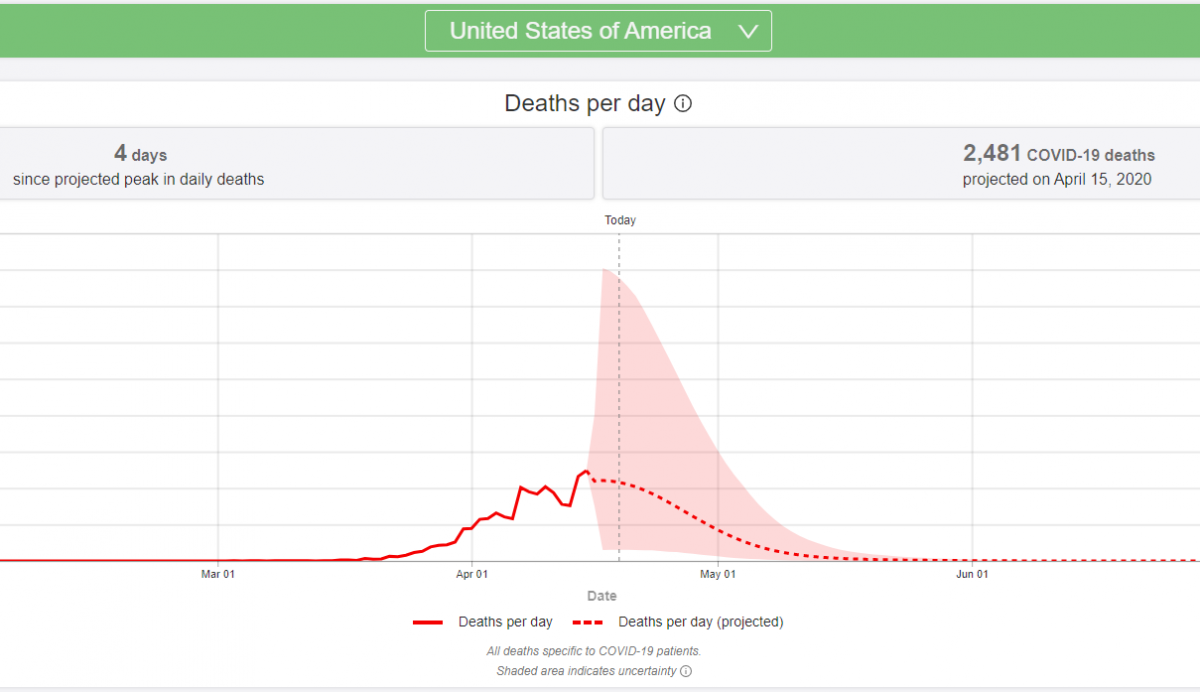4 Models To Help You Decide When To Call Your Employees Back To The Workplace
If we are going to “reopen America,” it helps to have a quantitative approach to make sure we are making the right decision. Since we are dealing with people’s lives and livelihood, this will be the most critical decision that most of us will ever have to make in their entire professional careers. Everyone wants to get America back to normalcy and recall our employees back to the workplace, but the debate is over when. While our President and our Governors will likely have an opinion and an influence, it will next fall on each organization and then each person to make the right decision. We have been grappling with this issue over the past month and present four models for when to decide to bring your employees together.
Making Decisions with Dependency
You can make your decision based on your gut, which is an emotional-based decision likely informed by your past experience which is often referred to as “case-based decisions,” the problem here is that few leaders have had to make this decision before in the history of mankind and those that have likely didn’t document their outcome. As such, making your decision based on your gut is likely the least effective way to make a decision since you are almost 100% relying on a guess which tends to have a large standard deviation of accuracy, which translates into having a wide “confidence interval.” In other words, you could guess, but you are likely to be wrong more times than you are right.
The other two approaches are being data-dependent or condition dependent. Since this represents a more rigorous and testable framework, we will limit our models to those decision profiles.

Model One: A vaccine
Of course, the most straightforward and most accurate model to use is condition-dependent, where you merely must test if there is a vaccine for COVID-19 disease and then test if that vaccine is widely available to your employees. If the answer is yes, then you can sound the “all-clear.” Unfortunately, since we are likely more than a year away from a safe vaccine, this approach may not be applicable if we are willing to take a little higher level of risk in exchange for restarting the U.S. economy.
Model Two: R Naught Control
The second model is data-dependent and is what many firms that remain open are doing now. The R0, or “R Naught,” is the rate of transmission. At present, our best estimation is COVID-19 spreads at a rate of between 2 and 2.5. That means for every person infected, they are infecting two to two and a half people. For any given COVID-19 model, of all the variables, the R Naught variable is the most important as the model is most sensitive to this number since it is a geometric progression. An infected employee would not only infect two other employees, but assuming ten interactions in a week with family members, friends, or people at the grocery store, that means that person is potentially infecting 512 other people.
To be able to call your employees back to the workplace, you need to assure that the R Naught is driven towards zero or at least far below “1.” Requiring masks, limiting common area gathering, disinfecting surface areas, controlling foot traffic, and spacing work areas are all steps that can be required. Still, businesses must make sure they have the organization, ability to monitor risk, and resources to accomplish their plan.
While this plan is workable in theory, in practicality, this is one of the more difficult to accomplish as workers are also going to have to depend on public transportation, daycare, and hundreds of other support businesses that may or not be available. Further, employees also have to have a certain amount of confidence in the Company’s plan since the plan is only as strong as the weakest link. Are employees going to want to take the chance that everyone is wearing their mask correctly and washing their hands if there is no ICU hospital capacity?
The final item to consider is workman comp claims and employer liability. It was one thing bank in March that if the employee got the coronavirus, it was hard to prove that it occurred in the workplace. Now, if you recall everyone back to work, and there is a documented outbreak in the workplace, the employees’ case will be much stronger.
Model Three: The Data Dependent Calculation
This is the most commonly discussed case and the most problematic. The common political refrain is that our societal cure is worse than the disease, and the economic impact of COVID-19 is more important than the spread of the disease. Implicit in this argument is that a certain loss of life is acceptable. The argument, if it stops there, tends to be more like the emotional-fueled case-dependent argument that we discussed earlier.
There is often the problem of using model projections such as those from the University of Washington that has become one of the most cited (HERE). While one of the best models available, we point out that it is based on social mitigations being in a place such as distancing, shelter-in-place, and the wearing of masks. If you relax those constraints, the model quickly becomes unreliable. Further, by the model’s own admission, the variability, as denoted in the shaded area below, is huge. Models need to be based on data, which is in short supply since there is not enough of a reliable sample of data to assure any accuracy.

At the core of these seeming data-dependent arguments, there is also an underlying assumption that often goes unspoken – what is the value of human life. Logically, if you could place a value of what a typical human life is valued at, including if you lost your spouse, parent or best friend, then you could theoretically derive a data-dependent algorithm that would show that you have everyone come back to the workplace when the impact to GDP is greater than the value of the loss of life.
This dangerous argument has a serious flaw in that it assumes we can return to a status quo ante of an economy before COVID-19 struck. It assumes that everyone will place the same value on human life to make that decision. The problem arises is that every person likely places a higher value on his or her life (or the value of life for their family) than the employer. Because of that disparity, those that value life more highly will remain at home, further hurting the economy while those that go back to work will put themselves at risk. The disparity will be unsustainable for any period as when the death rate increases, more and more workers will stay home. Society will move to a worse position than it finds itself in now with an economy in shambles and a faster-growing death rate.
Model Four: Condition Dependent
The fourth model is probably the most useful to companies as it is based not on unknown data sets and hard to validate assumptions but a set of conditions that must be present before you call your employees back to work. While there are many variations of this model, the one we find the most workable is the following:
Serological test: A reliable test for the SARS-CoV-2 virus must be available to all employees so you can test if you have already had the virus. Assuming there is some immunity conferred with previously having the virus (which is an unknown factor at present), then knowing which employees have had the virus would prove useful in workforce management.
Active virus COVID-19 tests: The test to show that you currently have, or do not have, COVID-19 must be readily available to be able to quickly figure out who should be quarantined and who should not. Without an easily available test, the R Naught factor will continue to be high.
Therapeutics: Medication that eliminates, dampens, or shorten the symptoms of COVID-19 must be readily available and effective. Workers must know that if they catch the virus, they will not suffer.
ICU Availability: Finally, the “curve” must be flattened enough to allow for excess capacity and resources that could support the worker should they get sick. Workers will likely not take a chance on treatment options knowing that if they are not effective, there is not hospital capacity.
The above multi-condition construct is a workable solution that is possibly not that far off, but it is not here yet. All four conditions must be present before companies have the confidence to recall workers back to the workplace.
Despite how it is made out by some politicians and the media, companies will have to make their own decisions on when to bring workers back. Since that decision could have far-reaching ramifications, it pays to lay out your methodology, complete your risk analysis, and seek board approval. While we propose the Fourth Model listed above, you may have your own. The NBA and other sports leagues are considering Model Two above. Whatever the case, now is the time to start developing the framework to assist you in the hardest decision you may ever make.

